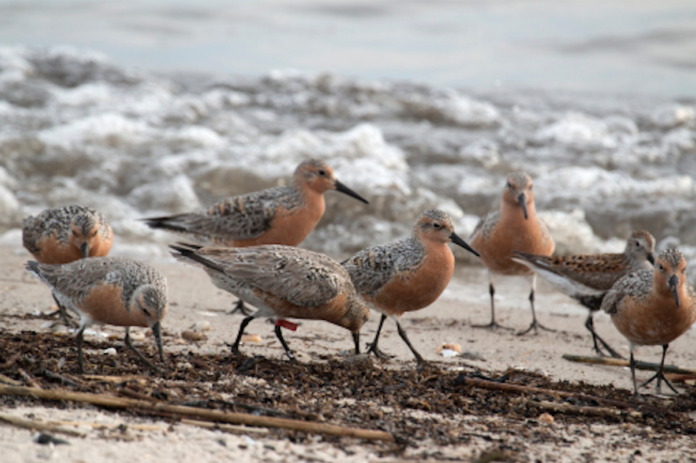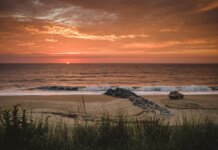Atlantic Shores Offshore Wind has partnered with Dr. Larry Niles of New Jersey-based Wildlife Restoration Partnerships (WRP), the U.S. Fish and Wildlife Service and professional wildlife research organization Normandeau Associates to research the movement of endangered red knots off the coast of New Jersey during their southbound migration.
Red knots, a state endangered and federally threatened shore bird, migrate each year from as far south as Tierra del Fuego, Argentina, stopping in the Delaware Bay to feast on horseshoe crab eggs before going to the Canadian Arctic to breed. Atlantic Shores and its partners are assessing whether, on their annual return trip south, red knots fly off the coast of New Jersey.
Starting this week, WRP will begin attaching satellite tags to 30 red knots as they stop in Brigantine Bay on their way south. The tags will allow a satellite to collect up to 60 pings of information on each bird’s precise location, flight path and varying altitude. Data will be collected near real-time as it is available via satellite and more comprehensively analyzed by researchers and Atlantic Shores over the coming months.
Atlantic Shores will use the data to support the development of an offshore wind project within its Lease Area, located 10-20 miles off the New Jersey coast, that will provide clean, renewable energy in a manner that minimizes and mitigates risk to these birds and the surrounding environment. Atlantic Shores has also committed to sharing their findings publicly to inform other researchers and offshore work.
“Building a truly green future requires that renewable energy projects are held to a high standard in terms of ecological impact,” says Niles.
“I’m encouraged that Atlantic Shores approached me to launch this study, both to inform their plans for offshore wind in New Jersey and to further our knowledge of red knot migratory patterns. This is a great example of how private and public institutions can work together to improve the lives of people and the natural world around us,” he adds.
Photo: Feeding red knot sandpiper birds




